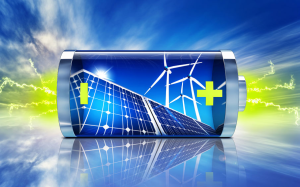Lithium-Ion vs. Lithium-Iron: Differences and Advantages
It’s not always easy to insert new batteries when employing power sources to operate embedded components. Batteries that can store a sizable quantity of energy, are lightweight enough to be carried or moved, and are safe for the user are needed for newer technology like smartphones, electric vehicles, and portable power tools. All these advantages are provided by lithium batteries for mobile devices, automobiles, medical devices, and even grid energy storage.
Lithium-Ion and Lithium-Iron Combined Chemistries
C-rates control how quickly a battery charges and discharges. It is common to describe a battery’s capacity as 1C, which suggests that a fully charged battery with a 1Ah rating should be able to provide 1A for an hour. The same battery should deliver 500mA for two hours on a 0.5C discharge, and 2C for 30 minutes on a 2C discharge.
Lithium-Ion
Lithium-ion batteries can have either a lithium manganese oxide or lithium cobalt dioxide cathode because they both contain a graphite anode. It has a 3.6V nominal voltage and 150–200 watt-hours of specific energy per kilogram. The battery can sustain considerable damage from higher charges, hence the charge rate is limited to 0.7C to 1.0C. 1C is the discharge rate of lithium-ion.

Lithium Iron Phosphate (LiFePO4)
Graphite serves as the anode while iron phosphate serves as the cathode in lithium iron phosphate. It features a 3.20V or 3.30V nominal voltage and 90/120 watt-hours of specific energy per kilogram. Lithium iron phosphate has a 1C charge rate and a 1C to 25C discharge rate.
What are the variations in energy levels?
The energy content of lithium-ion and lithium iron phosphate differs significantly. In comparison to lithium iron phosphate, which has an energy density of 90–120 Wh/kg, lithium-ion is 150–200 Wh/kg greater. Therefore, lithium-ion is typically the preferred material for electronics that consume a lot of power and rapidly deplete batteries.
However, compared to lithium-ion, lithium iron phosphate has a higher discharge rate. Lithium iron phosphate batteries produce outstanding voltage discharges at temperatures above 25C. Even though the capacity is decreased, the lithium iron phosphate battery is not considerably damaged by the discharge rate.
Variations in life cycles
With little deterioration, these batteries can withstand extreme temperatures. They have a long life, making them suitable for embedded systems or long-running applications without recharging.
The higher energy density of lithium-ion makes it more unstable, particularly in situations with higher operating temperatures. Its lifespan ranges from 500 to 1,000 cycles since the working components’ or electronics’ operating temperatures may have an adverse effect.
Advantages of long-term storage
It’s critical to choose a chemistry for unused batteries that won’t lose charge over extended periods of time. Instead, the battery ought to work almost as well when charged as when it has been in use for more than a year. For long-term storage, lithium ion and lithium iron phosphate are both excellent options. Due to its 350-day shelf life, lithium iron phosphate can be kept for prolonged periods of time. Lithium-ion batteries have a 300-day shelf life.

Advantages of lithium iron phosphate for safety
Manufacturers from a variety of industries utilize lithium iron phosphate for applications where safety is crucial. Having exceptional thermal and chemical stability is lithium iron phosphate. Even in hotter temperatures, this battery keeps its cool. Incorrect handling during rapid charges and discharges or when there are short circuit issues also prevents it from catching fire. Since the phosphate cathode will not burn or explode under overcharging or overheating and the battery remains cool, lithium iron phosphate often does not experience thermal runaway.
Lithium-ion chemistry, however, does not possess the same safety benefits as lithium iron phosphate. One drawback of its great energy density is that it makes the battery unstable. A lithium-ion battery can experience thermal runaway, which causes it to warm up more quickly during charging.
The battery’s eventual disposal after usage or malfunction is another benefit of lithium iron phosphate in terms of safety. The lithium cobalt dioxide chemistry used in lithium-ion batteries is regarded as a hazardous chemical since it can expose people to allergic reactions in their eyes and skin. When consumed, it can potentially result in significant medical problems. As a result, lithium-ion batteries require unique disposal considerations. However, manufacturers can dispose of lithium iron phosphate more easily because it is harmless.
Applications for lithium-ion and lithium-iron phosphate
Lithium iron phosphate is preferred for any electronics or machinery that requires lifespan and safety but not a lot of energy density. Electric motors used in cars, medical equipment, and military applications where higher ambient temperatures will be present. Lithium iron phosphate is suitable for applications that are more stationary because the battery is a little bit bigger and thicker than lithium-ion, even if it can be used in some portable technologies.
Due to its added weight, lithium iron phosphate may not be the best option for situations where portability is crucial. Lithium-ion batteries are employed in mobile phones, laptops, and tablet computers.
Manufacturers must not only choose the best energy sources based on portability, safety, and energy density, but also take into account the costs associated with both the production of electronics and their eventual disposal. As a less expensive battery option, lithium iron phosphate is frequently used by manufacturers. Because the safer iron phosphate chemistry requires less money to make, the batteries are less expensive.











